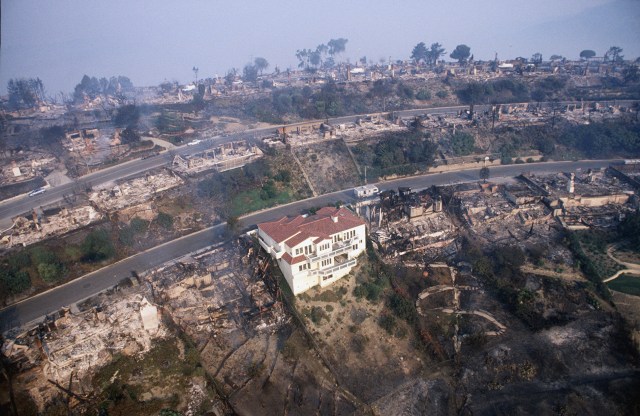- Joined
- Dec 3, 2017
- Messages
- 21,536
Fire is certainly not the only thing that can get us, but have you seen the stories of all the houses in neighborhoods that burn, except for one? Following is one story that someone posted.
"As we all watch the destruction caused by the California fires, our hearts and prayers are with all those affected, and the heroic 1st responders.
There is 1 family's example of being prepared that we all might learn from:
It was reported that 2000 homes were destroyed in 1 area. However, there was 1 (ONLY 1) home in the middle of all the destroyed homes that is still standing! It only needs a paint job to bring it back to what it was prior to the fires engulfing it.
How can that be?
According to the firefighter interviewed, this home was made of rammed earth. Their roof was made of steel beams and fireproof tiles. There was a sprinkler system on top of the roof.
The water for it was pumped from their basement rainwater catchment tank, using a generator to power the pump.
This family of 4 children from 14 to 20 and their parents, STAYED in their basement safe area while their house was engulfed by the raging fire, and operated an air purification system manually. "
"As we all watch the destruction caused by the California fires, our hearts and prayers are with all those affected, and the heroic 1st responders.
There is 1 family's example of being prepared that we all might learn from:
It was reported that 2000 homes were destroyed in 1 area. However, there was 1 (ONLY 1) home in the middle of all the destroyed homes that is still standing! It only needs a paint job to bring it back to what it was prior to the fires engulfing it.
How can that be?
According to the firefighter interviewed, this home was made of rammed earth. Their roof was made of steel beams and fireproof tiles. There was a sprinkler system on top of the roof.
The water for it was pumped from their basement rainwater catchment tank, using a generator to power the pump.
This family of 4 children from 14 to 20 and their parents, STAYED in their basement safe area while their house was engulfed by the raging fire, and operated an air purification system manually. "



















































